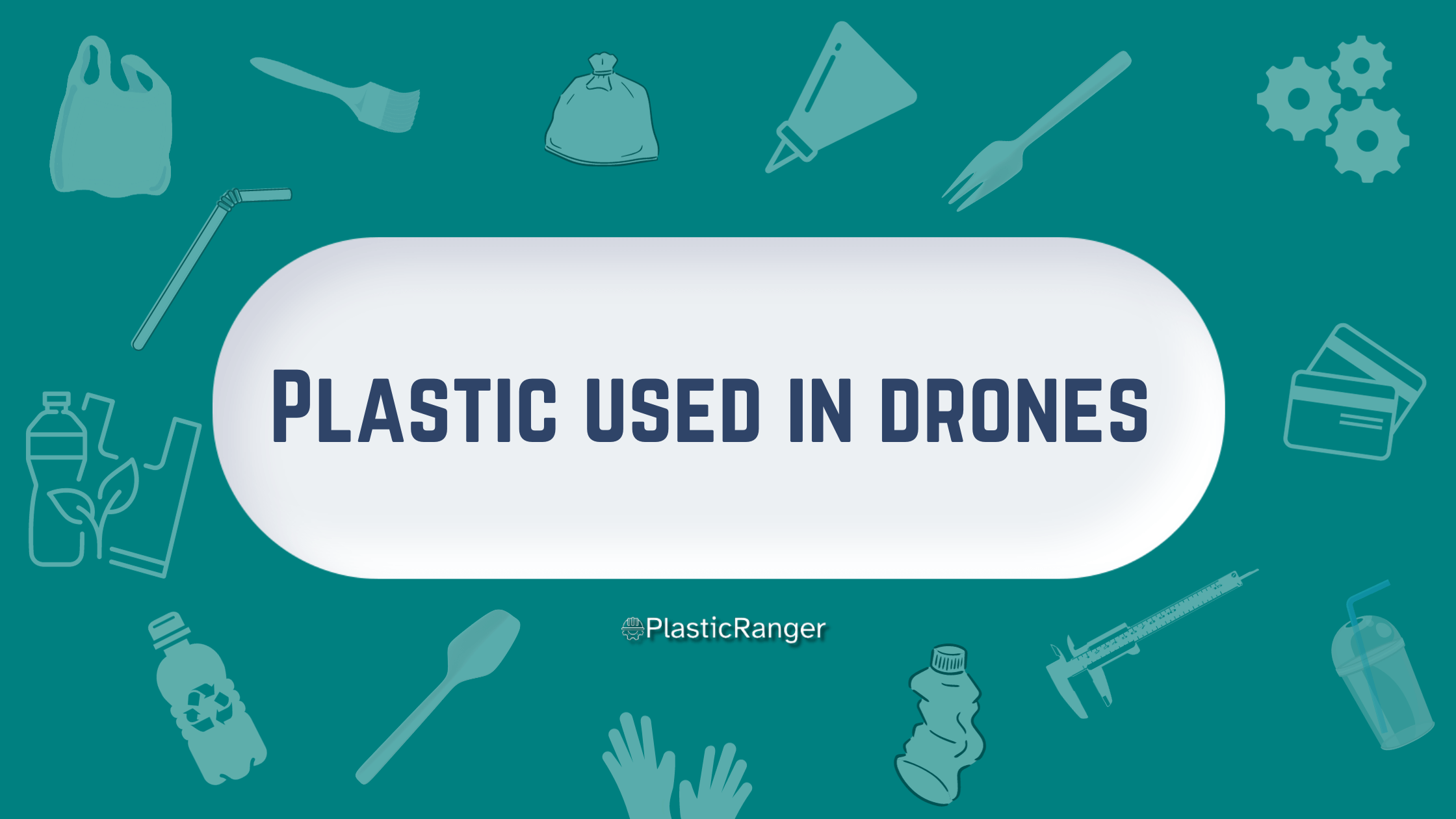In the rapidly evolving world of drone technology, the materials used in their construction play a pivotal role in determining these aerial devices’ performance, durability, and efficiency. Plastic materials have become popular mainly due to their lightweight, cost-effectiveness, and versatility.
This guide delves into the intricacies of various plastics employed in drone manufacturing, highlighting their properties, applications, and the reasons behind their popularity.
Plastics in Drones: Understanding the Basics

Importance of Material Selection
Regarding drones, the choice of materials is paramount. These materials must cater to numerous factors, including weight, strength, resistance to environmental factors, and cost. Plastics offer a balanced approach, often combining these characteristics well.
Common Types of Plastics
Plastics used in the drone industry can be categorized into different types, mainly thermoplastics, thermosetting plastics, and composite plastics, each serving other functions and offering varied characteristics.
Exploring Plastic Materials
ABS
ABS is a popular thermoplastic polymer that finds extensive usage in the drone industry. Known for its high impact resistance and toughness, it is often used to manufacture drone bodies and casings.
Properties: High strength, lightweight, high melting temperature, and good resistance to physical impacts.
Applications: Drone housings, propellers, and protective components.
Advantages: Easy to mold, cost-effective, and widely available.
Polycarbonate
Polycarbonate is a transparent, thermoplastic polymer known for its remarkable strength and impact resistance. It is also highly resistant to temperature variations, making it a preferred choice for drones operating in varying environmental conditions.
Properties: High impact resistance, transparency, high density, and excellent thermal properties.
Applications: Canopies, camera mounts, and protective shields.
Advantages: High optical clarity, resistance to UV rays, and adaptability to complex designs.
Polyamide (PA or Nylon)
Polyamides, also known as Nylon, are a group of synthetic polymers that offer a good balance between mechanical strength and flexibility. These characteristics make them suitable for parts that absorb shocks without breaking.
Properties: High tensile strength, fatigue resistance, and high melting point.
Applications: Gears, propeller guards, and flexible mounts.
Advantages: Good wear resistance, dampening vibrations, and easy to process.
Polypropylene
Polypropylene is another thermoplastic polymer utilized for its lightweight and durable characteristics. It is especially suitable for making components that require resistance to chemicals and electrical insulation.
Properties: Chemical resistance, high melt temperature, electrical insulation, and fatigue resistance.
Applications: Internal compartments, insulation for wiring, and chemical-resistant components.
Advantages: Lightweight, economical, and recyclable.
Composite Plastics
Composite plastics involve combining two or more materials, harnessing the benefits of each to create superior materials. In the drone industry, these are often used for high-end, professional drones where performance is crucial.
Carbon Fiber Reinforced Plastics (CFRP)
CFRP is a composite material with carbon fibers embedded in a plastic matrix, usually epoxy. This material offers a high strength-to-weight ratio, making it an excellent choice for high-performance drones.
Properties: High stiffness, lightweight, and excellent fatigue resistance.
Applications: Drone frames, propellers, and high-stress components.
Advantages: High strength-to-weight ratio, corrosion resistance, and good thermal conductivity.
Glass Fiber Reinforced Plastics (GFRP)
GFRP is a composite material with glass fibers embedded in a plastic matrix like CFRP. Though not as strong as CFRP, it offers good strength characteristics at a lower cost.
Properties: Good tensile strength, electrical insulation, and corrosion resistance.
Applications: Drone bodies, landing gears, and reinforcement in structures.
Advantages: Cost-effective, good insulation properties, and moderate weight.
The Future of Plastics in Drones
Advancements in plastic technology are continuously being developed, aiming to create materials with enhanced properties like greater strength, lighter weight, and better environmental resistance.
These developments are expected to spur the next generation of more efficient and sustainable drones. Sustainability and Recycling As the industry progresses, there is an increasing focus on sustainability.
This involves the development of recyclable plastics and incorporating recycling processes to reduce waste and environmental impact. Innovative Materials The future also promises intelligent plastics that can change their properties in response to external stimuli, offering new drone design and functionality possibilities.
Conclusion
In conclusion, plastic materials have emerged as the cornerstone in the construction of drones, owing to their versatile properties and cost-effectiveness. As we navigate the complex world of drones, it becomes evident that the role of plastics is ever-evolving, adapting to the changing demands and trends of the industry.
By understanding the nuances of different plastic materials and their applications in drone manufacturing, one can appreciate the depth and breadth of innovation that goes into creating these marvels of technology.
As we look forward to a future where drones are poised to become an integral part of our daily lives, the role of plastic materials cannot be overstated, propelling the industry towards new heights and horizons.
Through meticulous selection and combination of various plastics and composite materials, the drone industry seeks to create products that are not only high-performing but also environmentally responsible and sustainable.
Thus, as we stand on the threshold of a new era in drone technology, plastic materials stand as silent yet potent enablers, ready to usher in a future filled with possibilities and innovations.
Quick Navigation
